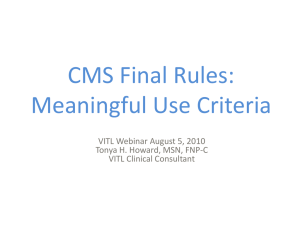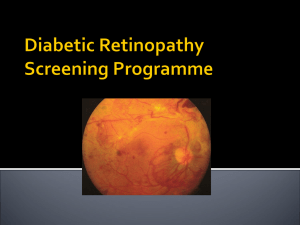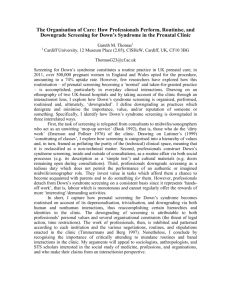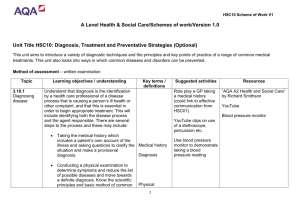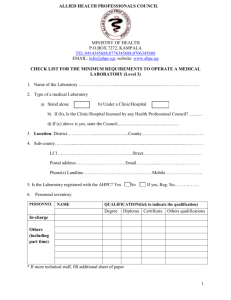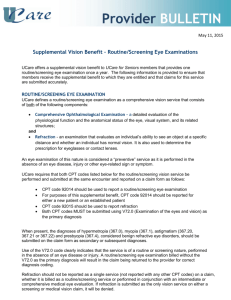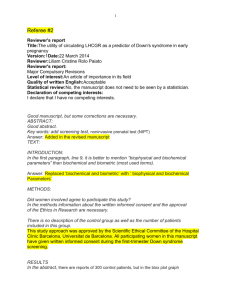Routine Prenatal Care
advertisement
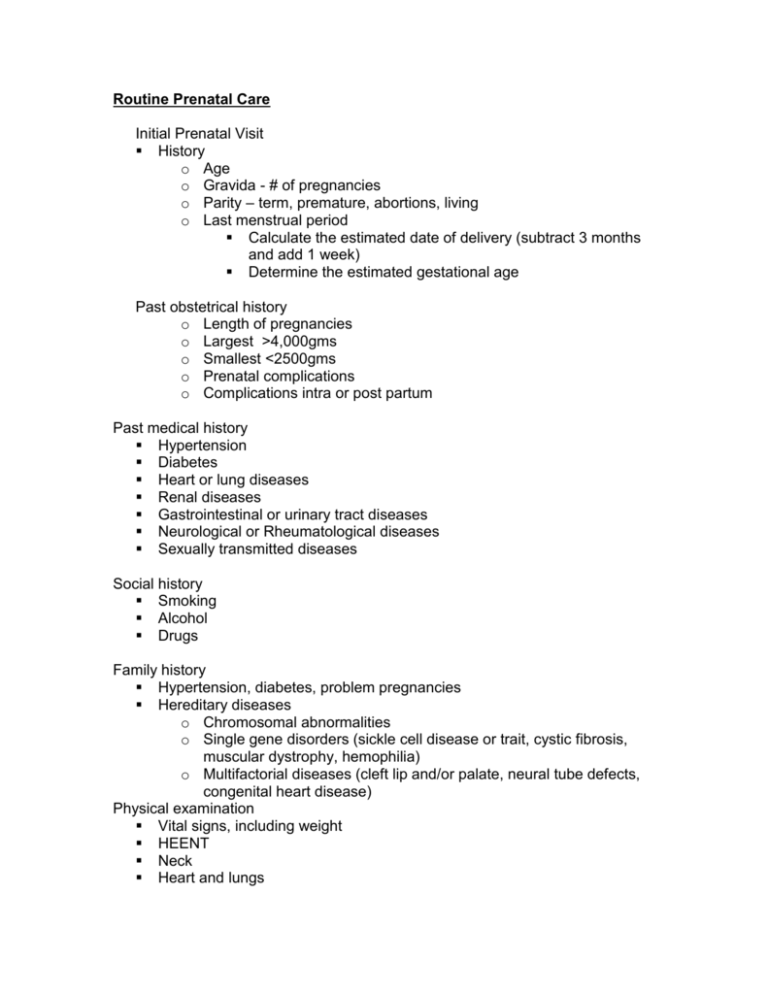
Routine Prenatal Care Initial Prenatal Visit History o Age o Gravida - # of pregnancies o Parity – term, premature, abortions, living o Last menstrual period Calculate the estimated date of delivery (subtract 3 months and add 1 week) Determine the estimated gestational age Past obstetrical history o Length of pregnancies o Largest >4,000gms o Smallest <2500gms o Prenatal complications o Complications intra or post partum Past medical history Hypertension Diabetes Heart or lung diseases Renal diseases Gastrointestinal or urinary tract diseases Neurological or Rheumatological diseases Sexually transmitted diseases Social history Smoking Alcohol Drugs Family history Hypertension, diabetes, problem pregnancies Hereditary diseases o Chromosomal abnormalities o Single gene disorders (sickle cell disease or trait, cystic fibrosis, muscular dystrophy, hemophilia) o Multifactorial diseases (cleft lip and/or palate, neural tube defects, congenital heart disease) Physical examination Vital signs, including weight HEENT Neck Heart and lungs Breast examination Abdomen Pelvic examination o External – look for lesions (esp. HSV, chancre, condyloma) o Vaginal – discharge (yeast, bacterial vaginosis, trichomonas) o Cervix Lesions – cancer, HSV, condyloma, polyps Muco-purulent discharge – GC, chlamydia Routine tests – PAP smear, GC and Chlamydia cultures Bimanual examination Estimate the uterine size Uterine or adnexal masses Pain Estimate the size of the birth canal Physical examination Extremities Neurological Uterine size estimation Before 18 weeks – estimate size After 18 weeks use fundal height o the distance between the superior aspect of the symphysis pubis and uterus (fundus) o Height in cm = EGA in weeks 18 –36 weeks Routine laboratory tests Complete blood count Hepatitis B surface antigen Serological test for syphilis (VDRL, RPR, ART) Blood type and antibody screen HIV antibody screening Rubella IgG antibody screening Sickle cell prep Urine culture Diabetes screen for at risk population – obesity, FH, previous Gest. diabetes, age > 35 Schedule return visits (routine patients) Up to 28 weeks gestation = monthly 28 to 36 weeks – biweekly 36 weeks to delivery – weekly Routine medications Prenatal vitamins (0.4mg folic acid) Folic acid 4mg with a FH of NTD – in 1st trimester Iron supplementation (30mg/day – up to 90mg if iron deficient) Return visits Briefly review the past medical history and determine her estimated gestational age Vital signs (nl <140/90) Weight gain o Nl = 1lb/week in the 2nd half o Abnormal 3 or more lbs/week Urine dip-stick glucose and protein o + glucose – suspect diabetes o + protein – suspect preeclampsia Uterine size Scheduled labs and tests 14-22 weeks – alpha-fetoprotein, estriol, and beta-hCG (screening for trisomy 18, 21, and NTDs) 24-28 weeks o 50 gm glucose screening test (O’sullivan) Nl < 140mg/dl o Hematocrit < 30% needs to be worked up o Repeat STD screening in at risk patients 41 weeks or greater – nonstress test Other commonly ordered tests Hemoglobin electrophoresis (anemic or sickle cell patients) 3-hour 100 gm glucose tolerance test (failed DM screen) Genetic amniocentesis - > 35 y/o pts, risk of trisomy 21, 18, or NTD, family history (CF, Tay Sacs) Indications for Ultrasound Anomaly screening Confirmation of, or to determine the E.D.C. (estimated date of confinement) o 1st trimester best (+ 4-5 days) o < 20 weeks next best (+ 10 days) o 20-28 weeks worse (+ 2 - 3 weeks) o > 28 weeks worst (+ 3 weeks) Size discrepancy (+ 3 cm) LGA, SGA, IUGR, increased or decreased amniotic fluid Fetal well being (biophysical profile)



